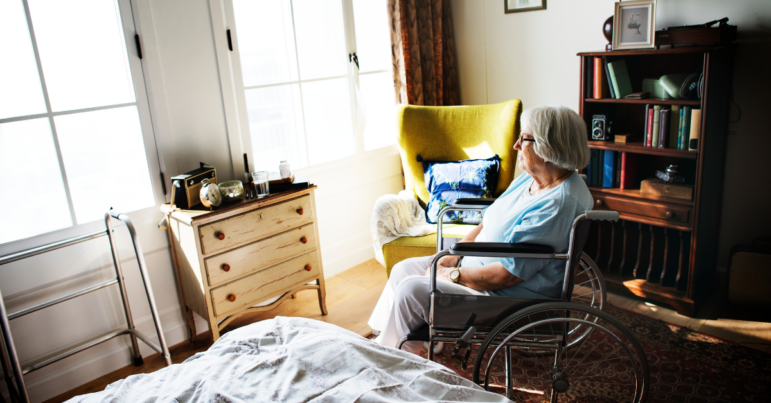Over the past 20 years, private equity investments in the United States healthcare sector have increased twentyfold, reaching above $100 billion. How have these acquisitions changed the business practices of hospitals and other healthcare organizations? This blog is the second in a series the Lown Institute is developing on the effects and implications of private equity acquisitions sweeping the healthcare industry.
Assisted living and older adult care facilities prove profitable for private equity investors
With over 800,000 Americans residing in assisted living facilities and another 800,000 on the wait list, elder care remains a large sector of the healthcare economy. As the baby boomers age and the so-called “silver tsunami” approaches, this sector is set to grow even more.
That’s why private equity investors have been gaining interest in assisted living and elder care facilities over the past years. Private equity is similar to for-profit in terms of profit-seeking, but private equity differentiates itself through its shorter-term focus and its capitalization on struggling businesses. According to the American Antitrust Institute, up to 10% of nursing homes are owned by private equity investors, though a lack of transparency makes it hard to determine the exact number. By restructuring the business model to prioritize profits, private equity firms are able to make short-term profits at the expense of our prized older adults.
Decreased staff, increased health complications
The New Yorker reported on one nursing home in Richmond, Virginia, that experienced just how quickly acquired healthcare business can be gutted for profits. Within two weeks of acquiring St. Joseph’s Home for the Aged, the private equity firm Portopiccolo Group had slashed the staff so drastically that on their worst days they had two staff for seventy two beds. “It takes two people just to take some residents to the bathroom,” a nurse at St. Joseph’s told The New Yorker. Amenities like group meals began disappearing and the quality of care dropped off. Patients went days or even weeks without being cared for, leading to complications like infections, malnutrition, and increased self-reported pain.
We pay more for worse care
Studies have shown that private equity acquisitions correspond with decreased quality of care. Individuals living in nursing homes owned by private equity firms are 11% more likely to have an alternate care site emergency room visit, and 8.7% more likely to be hospitalized. Medicare patients fare even worse. A 2021 working paper found that private equity acquisitions were tied to 10% increased mortality amongst Medicare patients. That’s an estimated 20,150 people lost over the 12 year study period.
Not only is the care worse, it costs taxpayers more too. Almost all Americans 65 and older are beneficiaries of Medicare, meaning their healthcare costs are covered by taxpayers. However, Medicare does not cover long-term care. That results in older Americans spending down their savings to qualify for Medicaid before their long-term care is covered. Research shows that private equity acquisitions of nursing homes increases taxpayer spending per patient by 11%. Another study compared them to for-profit homes not owned by private equity and found that Medicare costs were almost 4% higher – $1,080 per patient annually – in private equity owned homes. According to those findings, for-profit nursing homes not owned by private equity are actually more economical than private equity owned homes.
“The majority of revenue that pays for care in nursing facilities comes from public sources. After private equity acquisition, quality of care declines and Medicare spending goes up for residents, and that should be a concern for policymakers.”
–Dr. Unruh, an associate professor of population health science at Weill Cornell Medicine told reporters
The implications of increased private equity acquisitions of older adult care facilities are concerning enough to have drawn the attention of the executive branch. In his 2022 State of the Union address, President Joe Biden told Americans, “As Wall Street firms take over more nursing homes, quality in those homes has gone down and costs have gone up. That ends on my watch.” The Government Accountability Office (GAO) has launched an investigation into the ownership of nursing homes, with a report expected to be released this fall. We will have to wait and see what their findings are, and if any action is actually taken to curb this problem.
